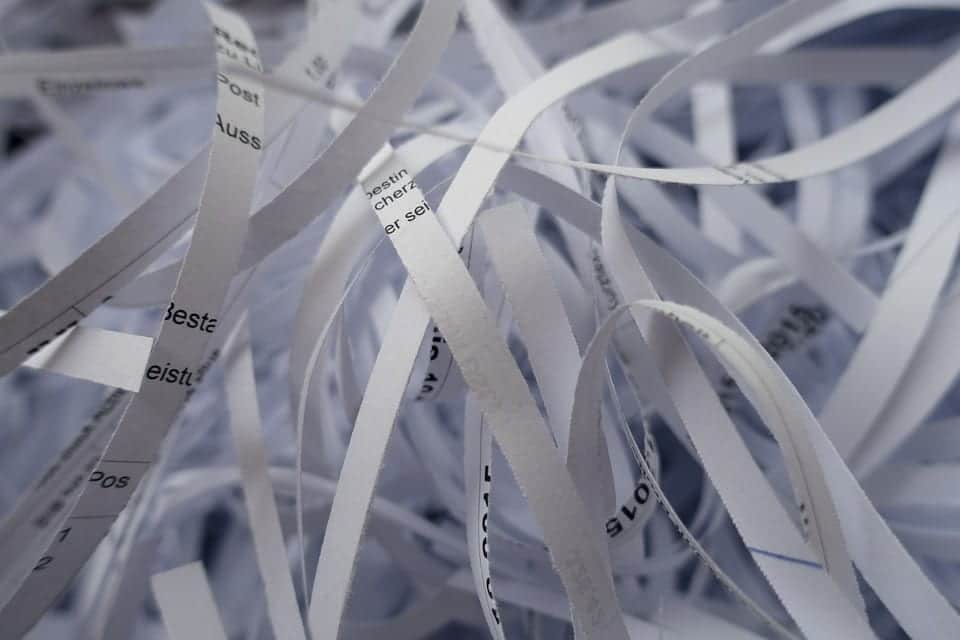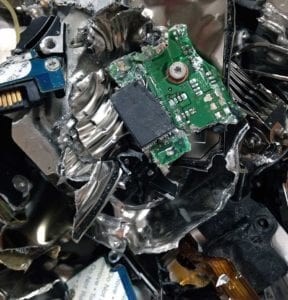Data Destruction:
When we no longer need a certain media, we must dispose of it in a manner that ensures the data can’t be retrieved. This pertains to both electronic media and paper copies of data.
- Paper disposal.
- It is highly encouraged to dispose of ANY paper with any data on it in a secure manner.
- This also has standards and cross shredding is recommended.
- It is easy to scan and have a program re-assemble documents from normal shreds like the this one.

- Digital disposal – The digital disposal procedures are determined by the type of media.
- Deleting, Formatting and Overwriting (Soft destruction):
- Deleting a file just removes it from the table; everything is still recoverable.
- Formatting does the same but it also puts a new file structure over the old one. Still recoverable in most cases.
- Overwriting is done by writing 0’s or random characters over the data.
- As far as we know there is no tool available that can recover even single pass overwriting (not possible on damaged media).
- Degaussing destroys magnetic media by exposing it to a very strong magnetic field.
- This will also most likely destroy the media integrity.
- Full physical destruction is safer than soft destruction:
- Disk Crushers do exactly what their name implies: they crush disks (often used on spinning disks).

- Shredders do the same thing as paper shredders do, they just work on metal.
- These are rare to have at normal organizations, but you can buy the service.
- Incineration, pulverizing, melting and acid are also (very rarely) used to ensure full data destruction.
- Disk Crushers do exactly what their name implies: they crush disks (often used on spinning disks).
- Deleting, Formatting and Overwriting (Soft destruction):
- It is common to do multiple types of data destruction on sensitive data (both degaussing and disk crushing/shredding).
- While it may not be necessary, it is a lot cheaper than a potential $1,000,000 fine or loss of proprietary technology or state secrets.



Thanks!
Depends on how it is done, we want to sanitize media, formatting or deleting files does nothing really just removed the paths, the data is still there.
Wiping is normally overwriting all bits, which is unrecoverable (as far as we know).
Is clearing data off a media is the same as wiping?